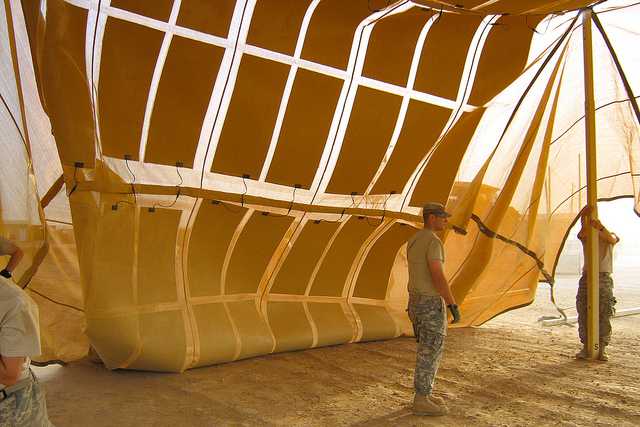
Federal funding for advanced clean energy technology is due for a severe cut, as the House Majority has proposed axing the entire project funding budget for ARPA-E, the federal agency tasked with promoting next-generation renewable energy. The fallout from such a move, though, undermines the Majority’s interest in stimulating job creation and supporting national defense strategies; many of ARPA-E’s programs are geared toward creating new green jobs and supporting the U.S. military’s stated policy of transitioning out of fossil fuels.
House Majority Proposes Cuts to Clean Energy
The Majority (okay, so Republican) proposals are contained in an October 14 letter detailing recommended cuts to the Department of Energy and other science-related agencies. There is much to dispute, but for now let’s focus on ARPA-E, an agency within the Department of Energy (thanks to writer Susan Morrissey of Chemical & Engineering News for flagging this, by the way). Without providing examples, the Majority essentially shuts the agency down until “programmatic improvements are made to ensure that all awards fund truly high-risk research that industry is not likely to undertake.”
ARPA-E and Green Jobs
The ARPA-E recommendation puts the Majority squarely at odds with its stated interest in creating jobs. To cite just one example, last year ARPA-E targeted $100 million in funding for renewable energy and energy efficiency innovations, specifically focused on job creation. In particular, one area of focus for that funding round is the development of low cost, high efficiency heating and cooling systems designed with U.S. exports to developing countries in mind. That market is certainly one example in which private industry in the U.S. has already proved itself unable to compete over the long term, and the Majority recommendation simply pounds another nail in the coffin. How much more proof of industry fail do they need?
ARPA-E and the U.S. Military
The Majority recommendation also puts the Republican party squarely at odds with its longstanding tradition of straight-up support for the U.S. military. ARPA-E is modeled directly on a Department of Defense agency, DARPA, which has the same basic mission: to provide support for projects that advance technology into the next generation. The two agencies are closely intertwined; to cite just one example, this year ARPA-E showcased a landfill gas-to-energy technology called Powerstation, which could be used to provide hyper-local renewable energy for military facilities.
An Energy Policy that Undercuts National Defense
Getting U.S. military facilities off-grid is a national defense priority, underscored by the recent formation of the Army’s new Energy Initiatives Task Force, which is designed to get more utility-scale renewable energy projects in the pipeline. The goal is to get a safer, more secure, more reliable, and more affordable energy supply to U.S. military facilities and their host communities. Cutting funding for programs that move this goal forward doesn’t seem like the most obvious way to support our troops, but hey, maybe the Majority knows something we don’t.
Source: Clean Technica
 Follow
Follow